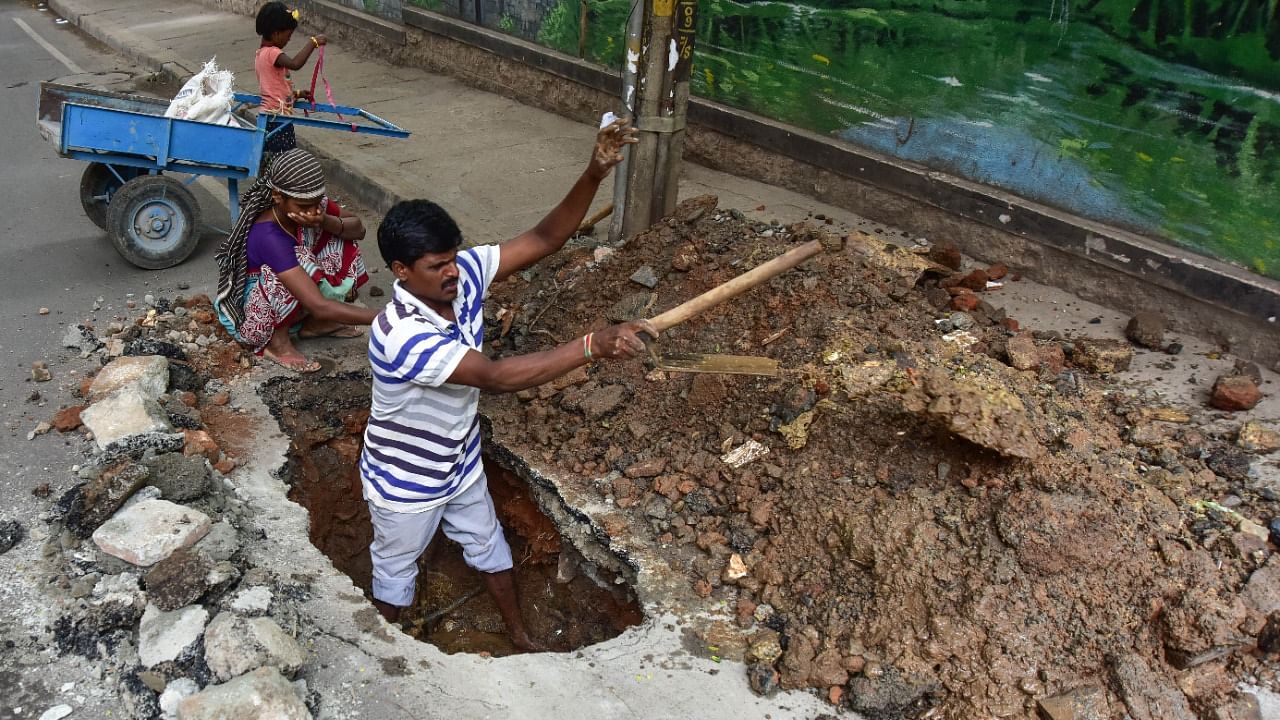
In 2020, when the Central government announced that the term ‘manhole’ in the Prohibition of Employment as Manual Scavengers and their Rehabilitation Act will be replaced with ‘machine hole’, the objective was to push for mechanisation. In fact, many machines have been developed and deployed, making the task of clearing blockages in sewers easier, especially in cities. Thereby reducing the chances of death during hazardous cleaning.
HomoSEP, a robot solution developed by the Indian Institute of Technology, Madras, was touted to be a good solution to end manual scavenging. Divanshu Kumar, Chief Executive Officer of the company that developed HomoSEP, told DH that the robot was designed keeping in mind the Indian sewer system and was modified based on the feedback of safai karmacharis.
Technological intervention with adequate training to operate the robots is the only solution to end the practice of manual scavenging according to Samuel Velankanni, Convenor, Safai Karamchari Andolan, Tamil Nadu.
“Since people want the sludge to be cleared and want to see the bottom of the tank clean, the workers are forced to enter the septic tanks. Some die while being exposed to poisonous gases,” Velankanni said, adding that robots that can go deep and clear sludge are the need of the hour.
Two HomoSEP robots have been provided to Nagammal and Ruth Mary – both of them lost their husbands to manual scavenging. The machines are yet to be used as approval from the Greater Chennai Corporation is still pending.
“I have a robot and two people have been trained to handle it. We hope to use them soon. If such a technology was available in 2007, my husband might have been alive today,” Nagammal said.
One more such solution, Bandicoot, launched in 2018 by a Kerala-based firm, is designed to mimic human movements with the help of AI, sensors and cameras. It can enter manholes, move around and gain stability in different terrains, open the cover of drains, remove solid waste and inspect the sewerage systems. About 250 such machines have been developed and deployed across 17 states.
The robot was piloted in Thiruvananthapuram in 2018 by deploying one unit for Kerala Water Authority's (KWA) sewerage division. Now three such units are functional. The company is now working on more features.
Bengaluru is yet to try robots seriously, but Suresh, engineer-in-chief of Bangalore Water Service and Sewerage Board (BWSSB), lists jetting-cum-suction machines, sucker and super sucker machines among those that have helped the city.
He is all-praise for the Delhi model of sewerage clearance, which has machines that can go into narrow lanes, which, he says, is exactly what Bengaluru needs. While underground drainage coverage has been developed in the old Bengaluru area, the 110 villages added in 2010 will get complete coverage soon. There will be no more septic tanks even in these areas, he says. However, with Bengaluru growing beyond the BBMP limits, if the city will truly be free of ‘man holes’, remains to be seen.